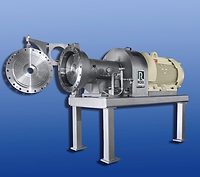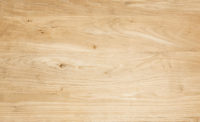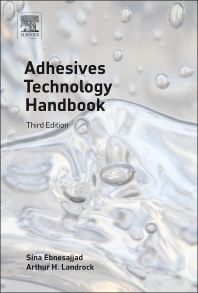Clever Adhesives for High-Quality Woods

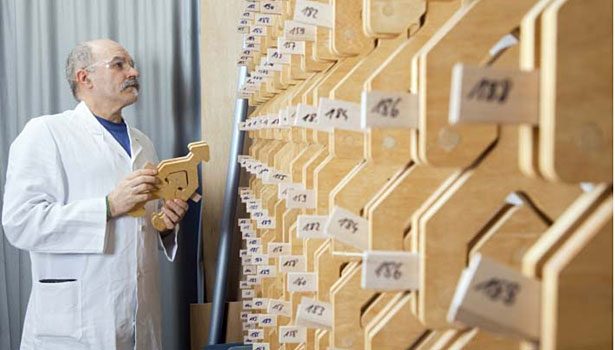
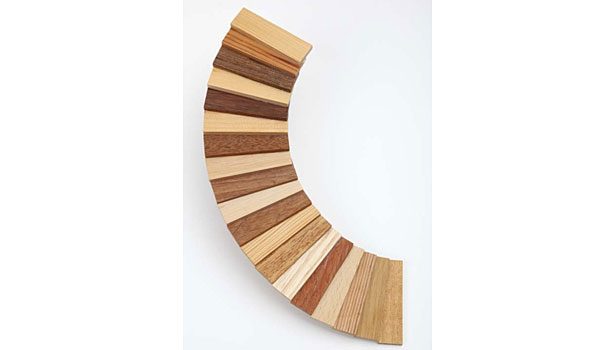



Natural wood comes in a wide range of colors, from almost-white maple to honey-colored pine and flame-red mahogany, all the way to the chocolate-brown of walnut. This natural material particularly presents its most beautiful side in the form of veneer. Surfaces laminated with fine veneer transform furniture, doors and wall coverings into exquisite one-of-a-kind items because the texture produced during the growth of each tree is unique. Plus, it’s not just flat surfaces that can be veneered – the process can also be used on curved chairs, in car dashboards or on luxury yachts.
While more than 60 types of wood are processed into veneers, by no means every tree is suitable for producing these wafer-thin layers of wood. Only about three out of every hundred trees meet the high requirements regarding desired color, attractive grain and flawless structure.
“Especially furniture covered with high-quality, expensive veneer has to look attractive for as long as possible,” says Thierry Laugerette, Global Market Manager for Adhesives at WACKER.
The processing phase in particular can do lasting damage to the appearance of these high-quality wood veneers, since these are usually applied on cabinets, tables or doors using white or wood glue. Although the resulting adhesive films are extremely thin, there’s a risk that, because of the components contained in the adhesives, the veneered surfaces will discolor over time.
“These discolorations are generally a problem with conventional polyvinyl-acetate-based D3 wood glues,” explains Dr. Oliver Pankow, Technical Service Manager for adhesives. “To achieve the necessary level of waterproofing, the polymer chains contain functional groups that crosslink in the adhesives during bonding. This curing process does not happen by itself: it must be catalyzed by salt additives called hardeners,” he stresses. However, these necessary curing additives can lead to blotchy discolorations in the wood. Even in comparatively thick veneer layers in excess of one millimeter, reddish spots and shadows can creep into the decorative surface after just a few years. As veneer sheets are getting thinner all the time, sometimes measuring only a few tenths of a millimeter, discolorations appear even earlier and become more obvious.
“Some types of wood react with a red discoloration because the tannins in the wood are altered by the acidic hardener salts and lead to discoloration,” confirms Dr. Massimo Venier, head of R&D at the adhesives manufacturer Durante & Vivan in Italy. However, it is difficult to make do without this component because only the crosslinking of the polymer chains gives the adhesive film the desired water resistance. Polyvinyl-acetate-based wood glues come in four durability classes from D1 to D4.
Whereas D1 glues are no longer very significant commercially due to their low water resistance, D2 and D3 glues have become standard for industrial applications. D4 glues provide the greatest resistance and are therefore mainly used for windows, doors and exterior applications where they are exposed to weathering.
“In wood processing for interior applications, so-called D2 and D3 glues are used,” explains Laugerette. “Cabinet makers and furniture manufacturers generally use D3 wood glues.” Suitable binders include WACKER’s VINNAPAS® DPN dispersions – although due to their composition they also can lead to the problematic discoloration effects described. The adhesives experts’ aim was thus to develop a dispersion providing the same proper-ties as D3 glues, but without hardener salts. Dr. Pankow adds: “After many years of research, we now have a new dispersion in VINNAPAS DPX 271 that has the necessary water resistance according to the D3-standard, even without hardener salts.”
To bring this new wood glue solution to marketable stage, WACKER is collaborating with selected partners. “Working together with the experts from Durante & Vivan, one of the leading adhesives manufacturers for wood glues in Europe, we have been thoroughly investigating the behavior of the new VINNAPAS DPX 271 in formulated adhesives,” explains Mauricio Costa, Regional Key Account Manager at WACKER. Other features, such as the setting speed and the processability period (i.e. “open time”), are also important parameters for manufacturers of both adhesives and furniture. “We have been working together very successfully with the R&D department of Durante & Vivan for several years. During our regular talks, we became aware of the discoloration problem and the need for a solution,” recalls Costa. “Their technical team is excellent and their extensive laboratory tests have given us great support in the development of the new dispersion.”
Involvement of Durante & Vivan as early as the development stage provided the adhesives company with the opportunity to shape the property profile and establish itself in the market early on with innovative solutions. “It was particularly important for us that the wood should no longer discolor,” explains adhesives ex-pert Dr. Venier. “But the long open time of the new dispersions is an added advantage for the processing and handling of our wood glues.” The fact that the acidic hardener salts can be left out pro-vides an additional advantage for adhesives manufacturers: they can process the dispersions using inexpensive fillers. “Due to its virtually neutral pH, VINNAPAS DPX 271 no longer has a problem even when using carbonates as filler,” emphasizes Dr. Pankow.
The correct appearance of furniture is an important aspect. But consumers are also becoming ever more conscious of health and environmental issues, which means that these issues are becoming more important for the manufacturers of furniture and adhesives. Wood-based materials have been the subject of much debate in the past, when unacceptable levels of formaldehyde were found in chipboard in the late 1980s. Formaldehyde-based reactive adhesives used in the production of chipboard were the original source of the substrate classified by the World Health Organization WHO as carcinogenic to humans in 2004.
The poly-vinyl-acetate-based white glues do not have this problem, since formaldehyde is not a constituent component of this glue. Nevertheless, white glues do contain trace amounts (in the ppm range) of formaldehyde, which forms during manufacture. The crosslinking reaction associated with waterproof white glues represents an additional source of formaldehyde. “This is not the case with VINNAPAS DPX 271”, explains Dr. Pankow. “Our novel DPX technology represents the successful development of a D3 wood glue dispersion which, at less than 5 parts per million, contains considerably less formaldehyde than conventional D3 glues,” the WACKER expert explains.
At present, there are no mandatory standards regarding the release of formaldehyde from adhesives for furniture applications. While individual countries and furniture manufacturers have developed guidelines of their own, cross-border regulations such as mandatory EU directives do not yet exist. “Nevertheless, this will become a serious issue in the near future, and when it does, we will be ready for the new market requirements,” declares WACKER manager Laugerette.
For the Italian adhesives experts at Durante & Vivan, the fact that the new WACKER dispersions are free of formaldehyde provides an additional reason for replacing conventional binders. “One of the challenges we face is to develop sustainable adhesive formulations,” says Dr. Venier, head of R&D at Durante. “With VINNAPAS DPX 271, we can offer innovative solutions to our customers in the furniture sector.”
And those are more in demand than ever. As in many other sectors, the pace in furniture production has quickened. “We have to respond ever more quickly to market requirements and, at the same time, be able to offer products that are cost-efficient,” says the adhesives expert, elaborating on the requirements. With the new WACKER binder, the next generation of adhesives is already in the starting blocks, ready to enable the processing of the world’s oldest, most natural and most versatile medium to this day – wood – in an even more environmentally friendly and sustainable manner.
For further information, contact nadine.baumgartl@wacker.com.
Looking for a reprint of this article?
From high-res PDFs to custom plaques, order your copy today!




